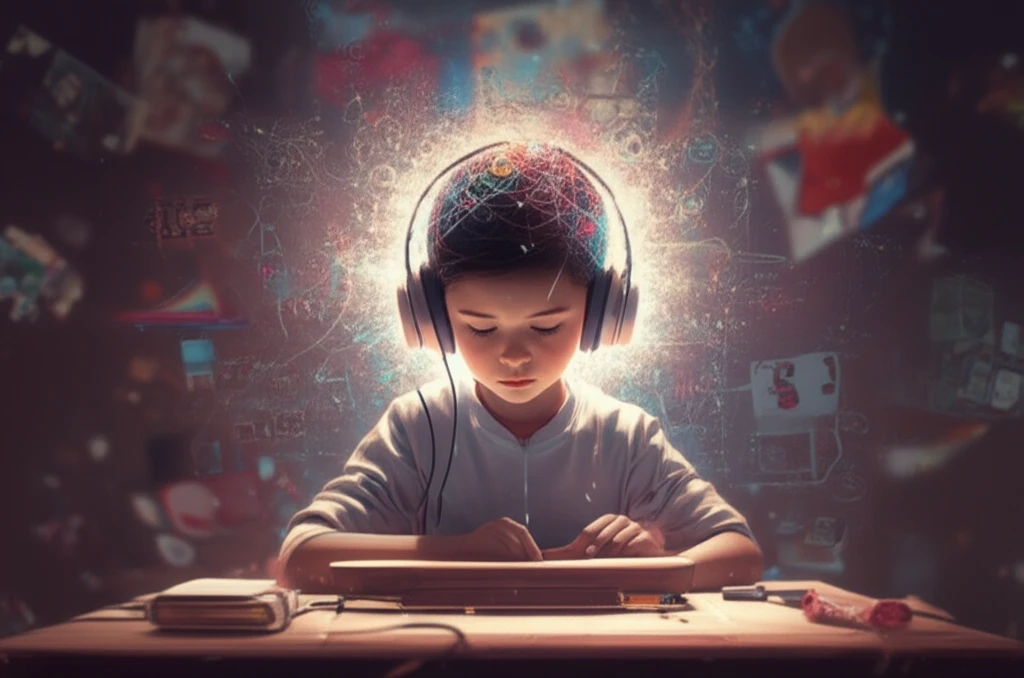
Can White Noise Help Your Child Focus? The Science Behind Sound Therapy for ADHD
"Exploring the potential of white noise as a therapeutic tool to improve focus and reduce impulsivity in children with ADHD."
Attention deficit/hyperactivity disorder (ADHD) affects millions of children, presenting challenges in focus, impulsivity, and hyperactivity. While medication and behavioral therapies are common treatments, they aren't always enough or suitable for every child. This has parents and researchers alike searching for accessible and effective complementary strategies.
One such strategy gaining attention is the use of white noise. White noise, characterized by its consistent, static-like sound, has been explored for its potential to improve sleep and cognitive functions in various populations. But can it truly help children with ADHD? The science is revealing some promising, yet nuanced, results.
This article will explore the potential of white noise therapy as a tool to manage ADHD symptoms in children. We'll dive into the research, examining the specific benefits observed, the underlying theories behind why it might work, and the important limitations to consider before tuning in.
The Potential Benefits of White Noise for ADHD: What the Research Says

Research suggests that white noise could offer several benefits for children with ADHD, particularly in areas related to attention and focus. However, it's crucial to understand that not all studies report the same results, and the effects can vary. Here's a breakdown of some key findings:
- Improved Speech Recognition: Studies have shown that white noise at a specific volume (around 65 dB) can improve speech recognition in children with ADHD, helping them better distinguish sounds amidst background distractions.
- Enhanced Reading and Writing Speed: Research indicates that children with ADHD may write more words and read passages faster when exposed to white noise compared to quiet or distracting environments.
- Reduced Impulsivity: Some studies suggest that white noise can decrease off-task behavior in children with ADHD, helping them stay focused on assigned tasks.
- Improved Vigilance: White noise has been shown to improve vigilance, or the ability to sustain attention over a period of time, in children with ADHD.
- Working Memory Boost: Certain types of working memory tasks have been shown to improve with white noise, suggesting a potential benefit for cognitive processing.
Is White Noise Right for Your Child? Considerations and Next Steps
While the research on white noise and ADHD is promising, it's not a one-size-fits-all solution. The effectiveness of white noise therapy can vary depending on the individual, the specific symptoms being addressed, and the type and volume of noise used.
If you're considering white noise therapy for your child, it's essential to consult with a healthcare professional, such as a pediatrician, therapist, or audiologist. They can help you determine if white noise is appropriate for your child's specific needs and guide you on how to implement it safely and effectively.
Remember, white noise should be viewed as a potential complementary tool, not a replacement for established treatments like medication or behavioral therapy. By working with healthcare professionals and carefully observing your child's response, you can determine if white noise can play a positive role in managing their ADHD symptoms and improving their quality of life.
